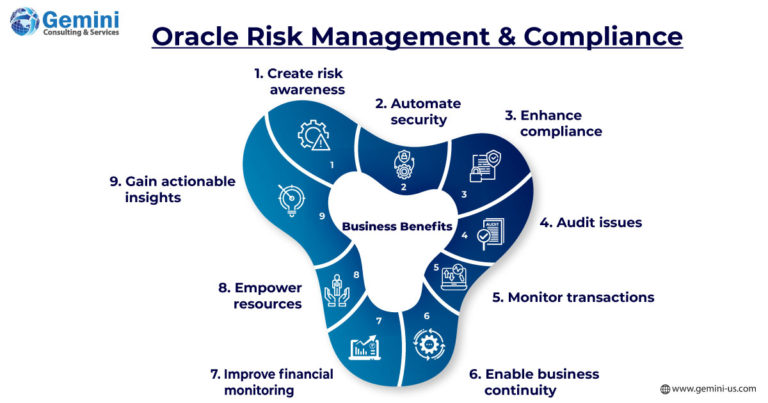Let me tell you a story. It’s a story not of dragons or epic quests, but of something far more common in the modern world: the digital heartbeat of a business. We’re talking about Enterprise Resource Planning, or ERP systems. For many years, I saw ERP as just… software. A necessary evil, perhaps, but mostly a tool that sat there, churning out reports and managing inventory. I was, frankly, a bit naive.
Then came the "incident." A small, seemingly insignificant error in our inventory system that cascaded into a huge financial write-off. It wasn’t malicious, just human error combined with a lack of oversight. That’s when I realized: our ERP wasn’t just a tool; it was the central nervous system of our entire operation. And like any central nervous system, if it’s not healthy, monitored, and protected, the whole body suffers. This was my wake-up call to the critical world of ERP Risk and Compliance Monitoring.
If you’re new to this, or perhaps you’ve heard the terms bandied about in meetings and felt a slight chill down your spine, don’t worry. I’m going to walk you through my journey, explaining it all in plain language, like we’re just having a coffee.
What Exactly Is an ERP System Anyway?
Imagine your business as a complex machine. You have the engine (finance), the gears (operations, supply chain), the fuel lines (HR, payroll), and the control panel (sales, customer service). An ERP system is like the integrated wiring and software that connects all these parts. It allows information to flow seamlessly, from an order placed by a customer to the manufacturing process, to the invoice being sent, to the payment being received, and finally, to the financial reports.
It’s powerful, efficient, and utterly indispensable for most medium to large businesses today. But with great power, as they say, comes great responsibility – and significant risks.
The Unseen Dangers: Why ERP Risks Keep Us Up at Night
When I first started delving into ERP risks, I pictured hackers in dark rooms. And yes, cyber threats are a huge part of it. But I soon learned the landscape is far more varied and, frankly, closer to home than I imagined.
Think of your ERP as a digital fortress. It holds all your crown jewels: customer data, financial records, intellectual property, employee information. Here’s a peek at the kind of dangers I learned to watch out for:
- Data Breaches and Security Risks: This is the one everyone fears. If unauthorized individuals gain access, they can steal sensitive data, disrupt operations, or even hold your systems hostage. This isn’t just external hackers; it can be disgruntled employees or even accidental exposure.
- Financial Fraud: My personal "incident" was a version of this. ERPs manage vast sums of money. Without proper controls, there’s a risk of internal fraud (e.g., fictitious vendors, unauthorized payments) or external fraud attempts (e.g., phishing scams targeting payment processes).
- Operational Disruptions: What happens if your ERP goes down? Orders can’t be processed, production stops, payroll can’t be run. This can be due to system failures, human error during updates, or even natural disasters. Business grinds to a halt.
- Compliance Failures: This is where things get really tricky. Every industry, every country, has rules. GDPR for data privacy, SOX for financial reporting, HIPAA for healthcare data – the list goes on. If your ERP isn’t configured or used in a way that adheres to these rules, you face hefty fines, reputational damage, and even legal action.
- Data Integrity Issues: Imagine if your sales figures don’t match your inventory, or if a customer’s address is wrong in one module but correct in another. Inaccurate or inconsistent data can lead to bad business decisions, customer dissatisfaction, and operational nightmares.
- Segregation of Duties (SoD) Violations: This was a big one I learned about. It’s the principle that no single person should have enough access to complete an entire critical transaction from start to finish. For example, the person who approves invoices shouldn’t also be the person who creates new vendor accounts. If these duties aren’t separated, the risk of fraud or error skyrockets.
It was a lot to take in. My initial thought was, "How can one system have so many potential points of failure?" And that’s precisely why monitoring isn’t just a good idea; it’s absolutely essential.
The Compliance Labyrinth: Navigating the Rules
Beyond the direct risks, there’s the whole universe of "compliance." For a long time, compliance felt like a bureaucratic burden, a checklist of things auditors made us do. But I came to see it differently: compliance is essentially a set of best practices and legal requirements designed to protect the business, its customers, and its stakeholders.
Think of it as the building codes for your digital fortress.
- Data Privacy Regulations (GDPR, CCPA): These dictate how you collect, store, and process personal data. Your ERP handles a lot of this.
- Financial Reporting Standards (SOX, IFRS): These ensure your financial statements are accurate and transparent. Your ERP is the source of truth for these numbers.
- Industry-Specific Regulations: Healthcare (HIPAA), banking, government – each has its own strict rules about data handling and security.
- Internal Policies: Don’t forget your own company’s rules! These are just as important for maintaining control and consistency.
Failing to comply isn’t just about avoiding fines (though those can be crippling). It’s about maintaining trust. If customers or partners lose trust in your ability to protect their data or manage your finances responsibly, your business is in deep trouble.

